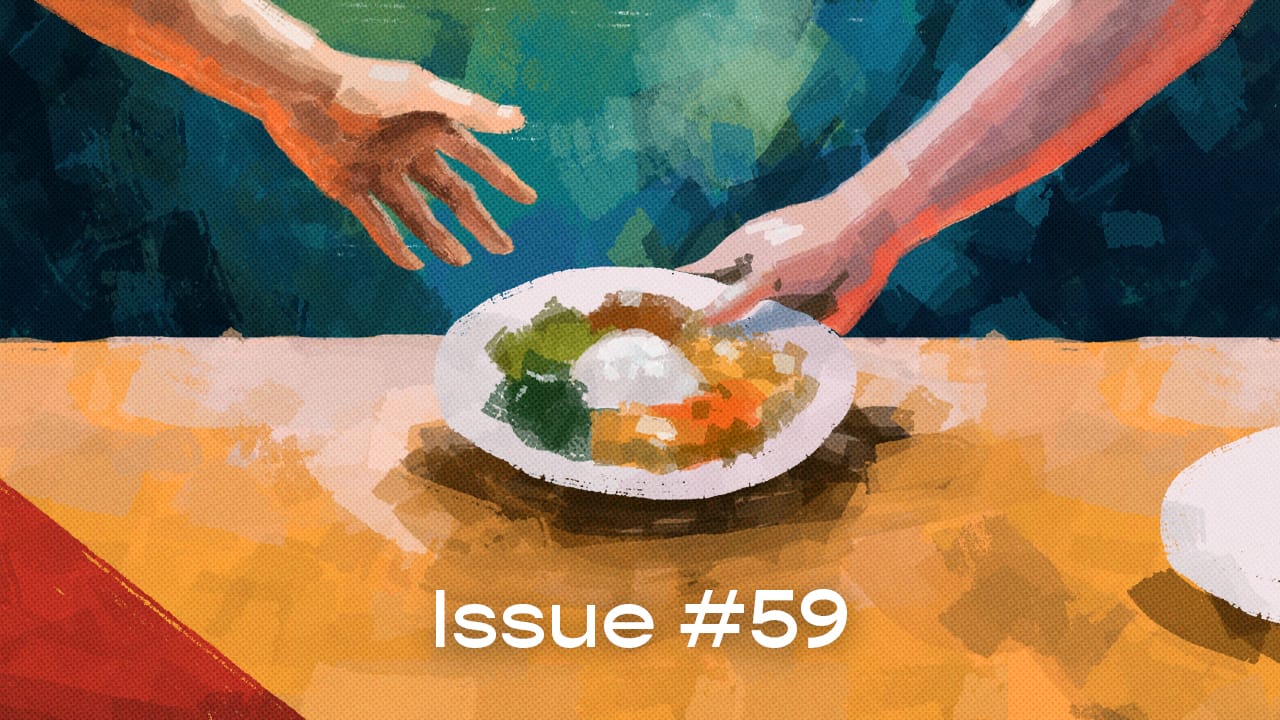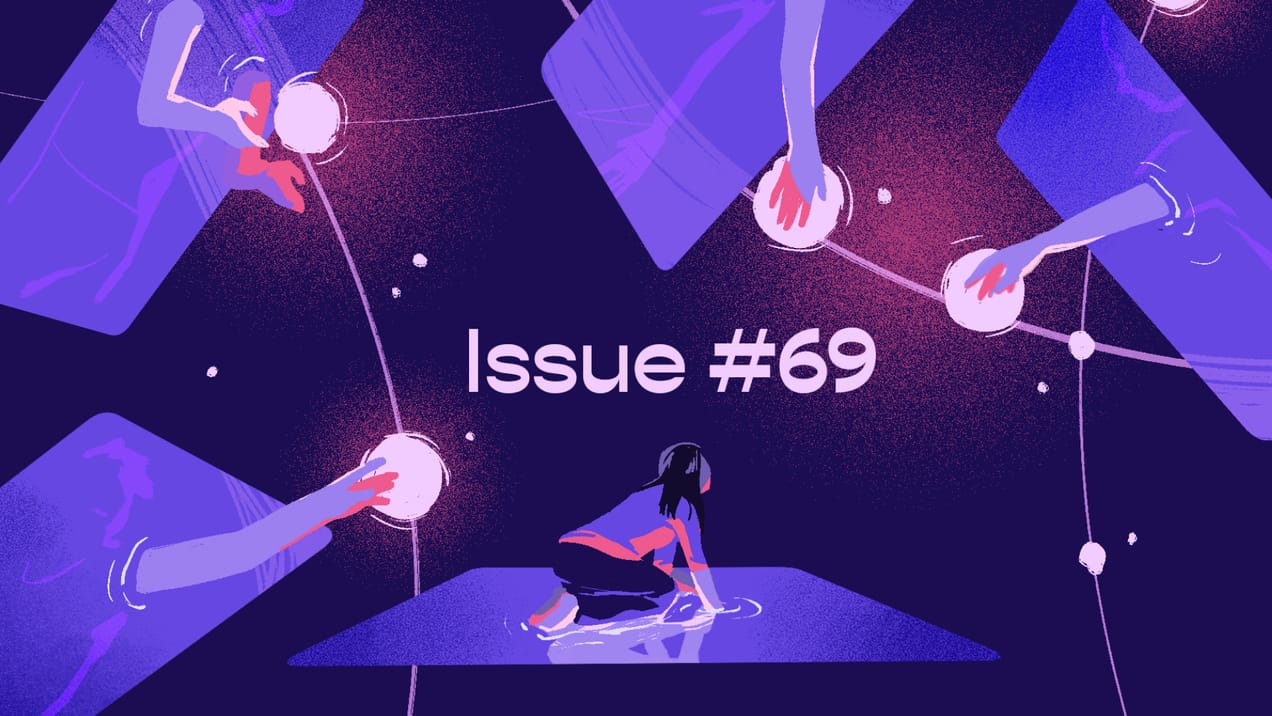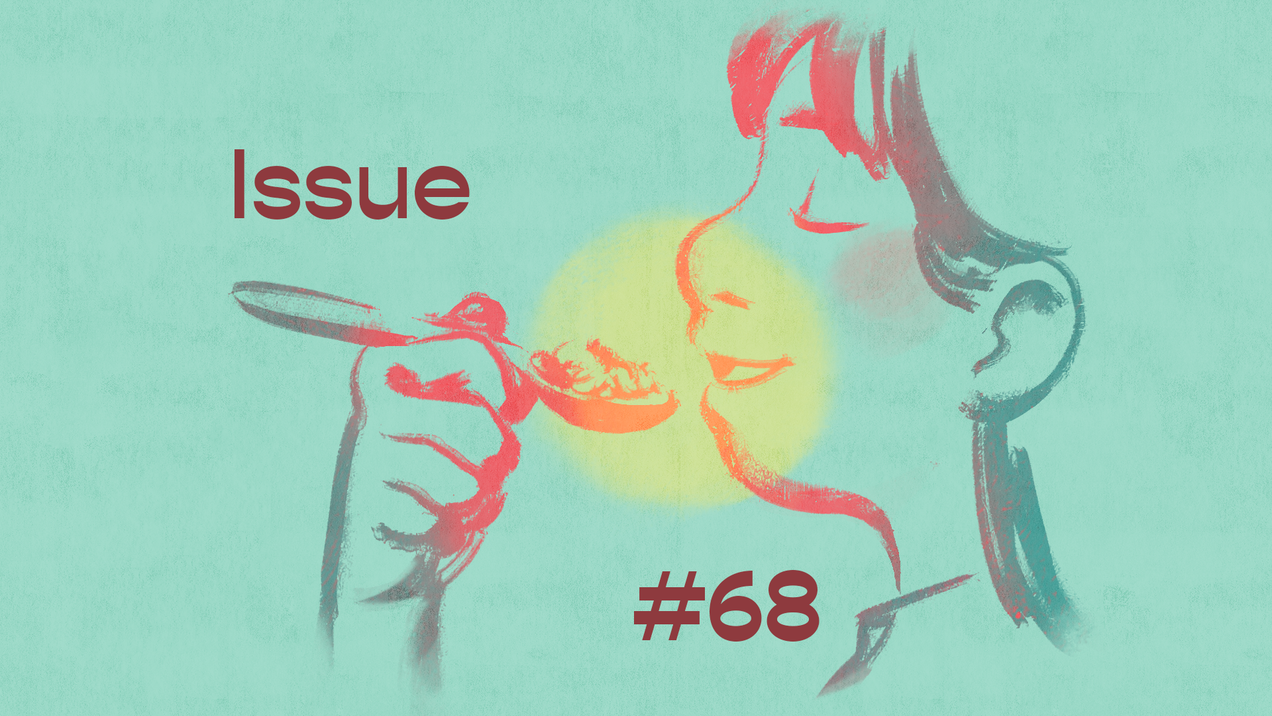
Have you eaten yet? That is to say, how are you? — issue #59

Have you eaten yet? That is to say, how are you?
In Thailand, you may hear people greet each other with “กินอะไรหรือยัง? (kin khao reu yang?)”, meaning “Have you eaten rice yet?” It demonstrates how essential rice is to life in Thai culture, where it is equated to food and sustenance in general. To ask if someone has eaten rice is thus more than asking if one has filled his or her belly; it’s asking after someone’s well-being.

The Thai greeting reminds me of all the times my mother or an elder had asked as soon as they saw me, if I’d eaten, and to “jamah nasi (have some rice)” before leaving the house. The gravies and sambal aren’t ready yet, but please have some rice to sustain you on your way, the instruction implies.
I never gave much thought to it before, but now that I've become a parent, I realised shoving a ball of rice into my child’s mouth to make sure they wouldn’t be hungry while they’re outside is an act of love.

Kontinentalist has developed a similar, more modern love language. Around noon each day, someone will ping the team channel to remind us that it’s lunchtime, and to take a collective midday break from our screens. Discussions are made over what and where to eat. Most of the time, we eat rice.
Nasi ayam penyet and nasi campur are favourites. We often order the latter for events, as it is diverse, filling, and good for sharing. Some of you might’ve had nasi campur with us at our last New Year’s Party. (Speaking of which—we've just announced the next one!)
A popular communal dish in the Nusantara region is “nasi ambeng.” Originating from the Javanese word “ambengan”, it means to sit together, or to gather in defence of a cause or object. It reminds me a lot of the work we do at Kontinentalist, where we come together to learn, discuss, brainstorm, and create stories and projects close to our hearts.

Eating together nurtures a spirit of kinship and community, which is very much alive across the region. We see it in our celebrations of important milestones, festivals, and age-old rituals. I have fond memories sitting over a large platter of nasi ambeng during family gatherings, impatiently beckoning my cousins to join me so we can dig in.

This sense of community is something that has graced many of our projects this year. We got to collaborate with cool, passionate people who share our love for Asia’s cultures, and many others who share the aim of building a better and more just world together.
When we worked on our story on cultural genocide in Gaza, several other organisations and individuals kindly offered us expertise, advice, and connections. It touched me deeply to know that many others believed in the Palestinian cause, and would gladly support work that sought to amplify it.

Which brings me back to rice. Did you know that regions that have historically cultivated rice tend to have stronger and more complex bonds? Farmers in rice-growing communities usually work interdependently, as rice cultivation requires lots of hard, intensive labour and elaborate irrigation networks.

Just like anything good in this world, it takes a village!
The last few months have definitely seen us take this part of a popular Chinese proverb quite seriously: “If you are planning for a year, sow rice.” It feels right, after a year of reflecting and critically perceiving the world around us, to start planting seeds.

As the year comes to an end, we’d like to thank our small but growing village for supporting our work and being as open to learning and unlearning as we are. I’m excited for what we have in store for 2025, and we hope you are too!



